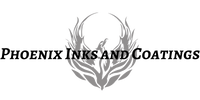Flexographic Coating

Why Flexographic?
The nature and demands of the printing process and the utilization of the printed product determine the essential properties required of flexo products. Measuring the substantial properties of inks/coatings and understanding how these are affected by the choice of constitutants is a important part of the technology. Flexographic printing products are primarily formulated to remain compatible with the wide variety of substrates used in the process. Each formulation component individually fulfills a special function and the proportion and composition will vary according to the substrate.
There are Four main variants that can be used in flexography:
- solvent-based
- water-based
- electron beam (EB) curing
- ultraviolet (UV) curing
What is it used for?
Flexo has an advantage over lithography in that it can use a wider range of inks, and is good at printing on a variety of different materials like: foil, brown paper, film, and synthetic paper. Typical products printed using flexography include: brown corrugated boxes, flexible packaging, retail bags, shopping bags, food bags, hygiene bags, beverage cartons, flexible plastics, self-adhesive labels, disposable cups, laminates, and even envelopes.
What equipment do you use?
Many companies make these presses and a few of them are: Mark Andy, NilPeter, Rotatek, LohiaCorp, Domino, Heidelberg, Hemingstone, Bobst, and many many more!
These presses utilize 1-8 colors typically and are highly customizable. All or most of these presses have the following: fountain roller, doctor blade, anilox roller, plate cyliner, flexo plate, and an impression cylinder.

